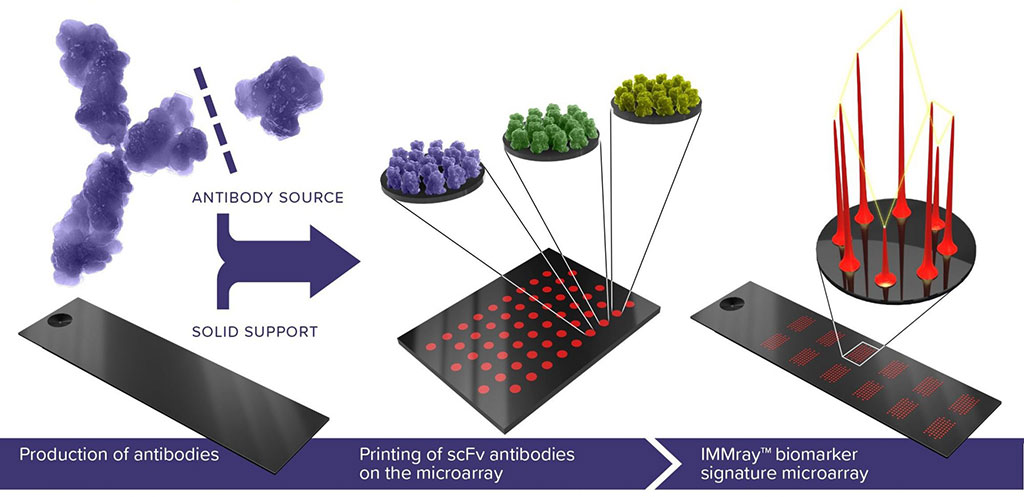Immunoassay Detects Pancreatic Cancer in People at High Risk
Posted on 28 Feb 2022
An immunoassay was able to detect pancreatic cancer in high-risk individuals and with high sensitivity and specificity.
Pancreatic cancer arises when cells in the pancreas, a glandular organ behind the stomach, begin to multiply out of control and form a mass. These cancerous cells have the ability to invade other parts of the body. A number of types of pancreatic cancer are known.

Signs and symptoms of the most-common form of pancreatic cancer may include yellow skin, abdominal or back pain, unexplained weight loss, light-colored stools, dark urine, and loss of appetite. Usually, no symptoms are seen in the disease's early stages, and symptoms that are specific enough to suggest pancreatic cancer typically do not develop until the disease has reached an advanced stage.
An international team of gastroenterologists led those at University of Pittsburgh Medical Center (Pittsburgh, PA, USA) examined serum samples from 586 adults: 167 with pancreatic ductal adenocarcinoma (PDAC) (median age 70 years, 58% male), 203 at high-risk for familial PDAC from a clinical trial (median 59 years, 36% male), and a control group of 216 healthy adults (median 49 years, 51% male). Histologically confirmed PDAC blood samples were collected for processing prior to surgery or adjuvant treatment, and laboratory personnel were blinded to the identity of the serum samples. Samples were collected at eleven sites in the USA and Europe, using standard protocols with storage conditions of -80 °C and thawed for analysis within two years of collection.
The scientists used the multiplex IMMray PanCan-d assay (Immunovia, Marlborough, MA, USA) which distinguished 56 PDAC stages I & II versus high-risk individuals with 98% specificity and 85% sensitivity, and distinguished PDAC stages I – IV versus high-risk individuals with 98% specificity and 87% sensitivity. They identified samples with a CA19-9 value of 2.5 U/mL or less as probable Lewis null (le/le) individuals. Excluding these 55 samples from the analysis increased the IMMray PanCan-d test sensitivity to 92% for 157 patients with PDAC stages I-IV versus 379 controls while maintaining specificity at 99%; test sensitivity for PDAC stages I & II increased from 85% to 89%. IMMray PanCan-d combines eight serum biomarkers with CA19-9 to generate a risk-level signature. The biomarkers are a combination of immunoregulatory and tumor biomarkers.
Andrew Hendifar, MD, an Assistant Professor at Cedars-Sinai Medical Center in Los Angeles, who was not involved in the study, said, “The high specificity is promising and proof of principle that biomarker assays could be used to help clinical decision-making in identifying early pancreatic cancer.”
The authors concluded that their results demonstrate the IMMray PanCan-d blood test can detect PDAC with high specificity (99%) and sensitivity (92%). The key to improve survival is early detection during a potentially curable stage. Low or negative CA19-9 expression in individuals who are genotypically Lewis antigen null (i.e., le/le with mutations in both copies of the FUT3 gene) further limits the reliability of this biomarker for PDAC detection.” The study was published on February 14, 2022 in the journal Clinical and Translational Gastroenterology.
Related Links:
University of Pittsburgh Medical Center
Immunovia














